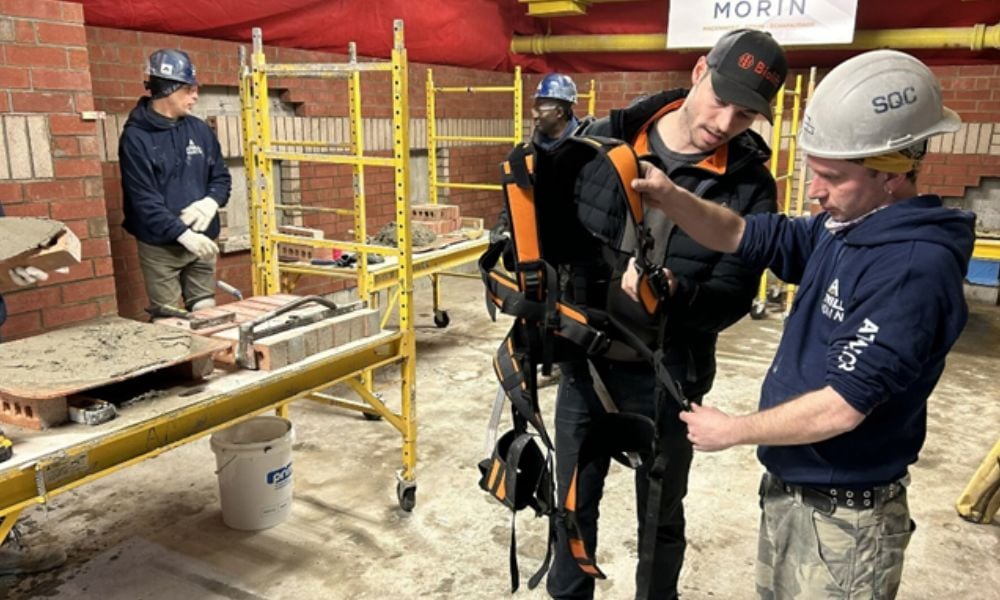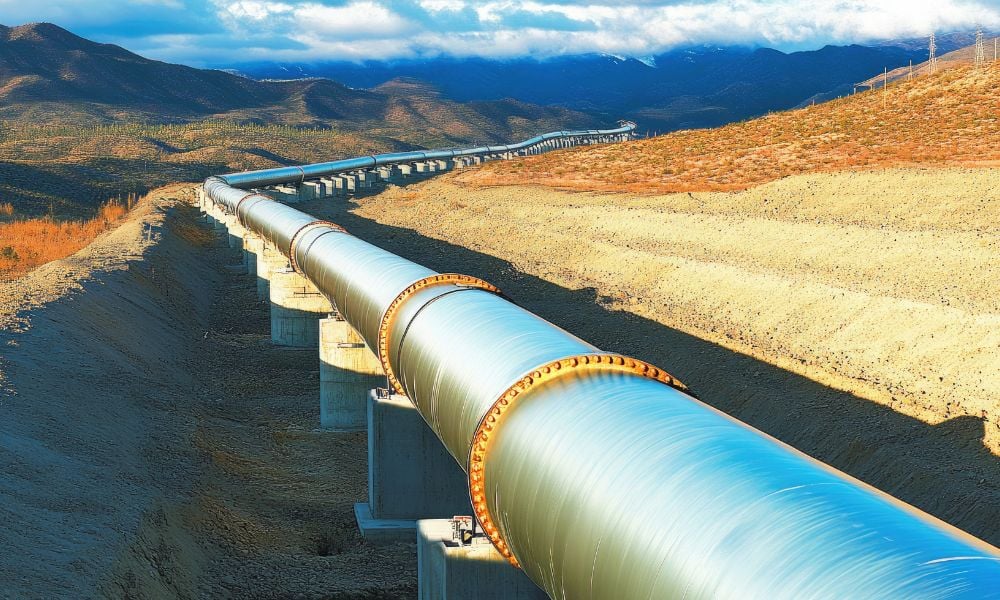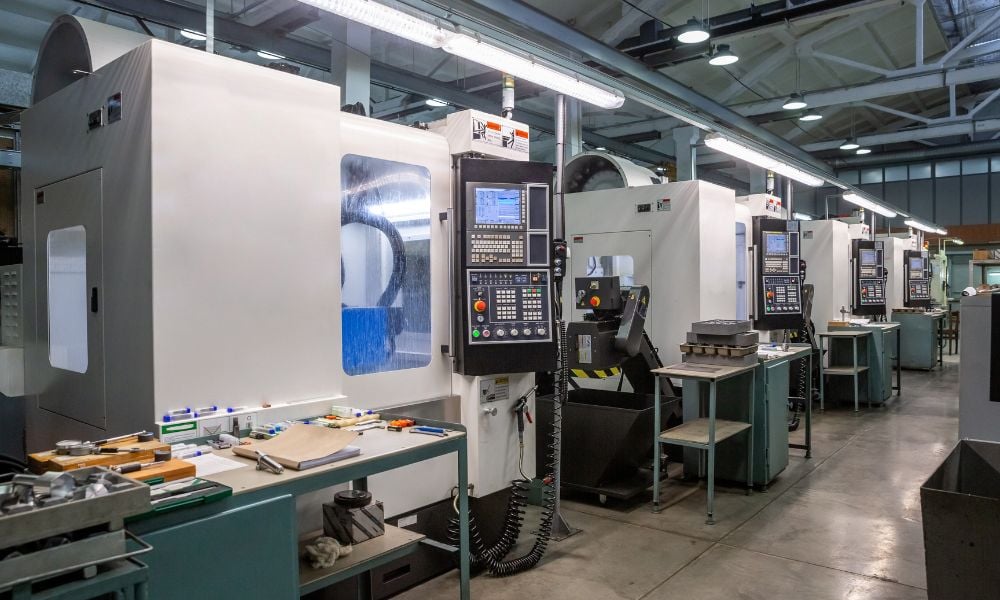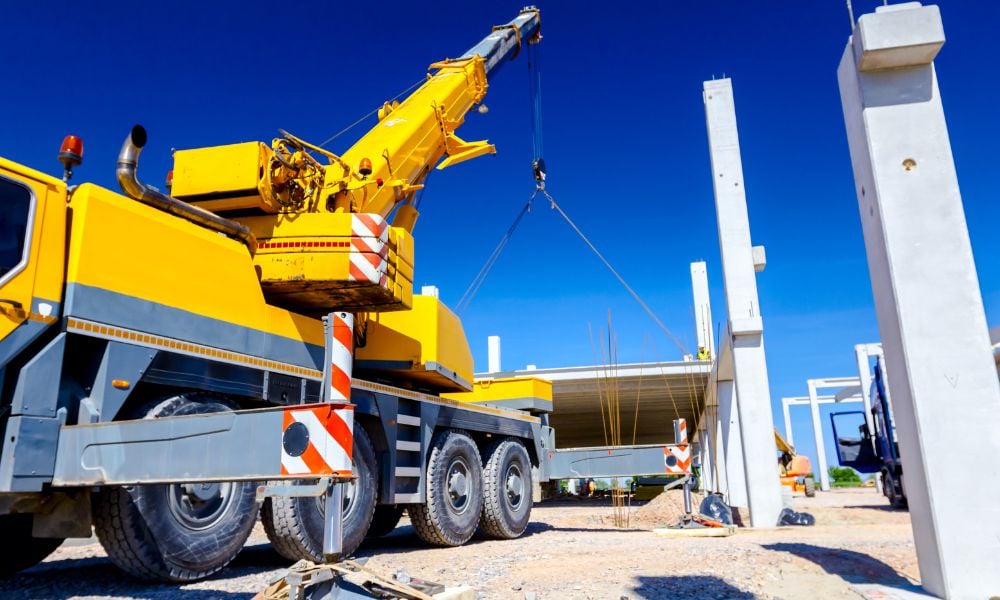Construction firm sees benefits after five years of experimenting with technology

In an industry renowned for its physically demanding tasks, Quebec-based construction firm Atwill-Morin is pioneering a transformation in workplace ergonomics and safety. "Innovation has always been a key part of our business," says Matthew Atwill-Morin, President of the company. This forward-thinking approach has led the company to adopt exoskeleton technology to enhance the safety and longevity of its workforce.
Early adoption and experimentation
Atwill-Morin began exploring exoskeletons about five years ago, driven by a commitment to protect their employees from the long-term physical toll of construction work. "We've always been searching for different ways to keep everybody safe every day," Atwill-Morin explains. The firm experimented with various models from major tool manufacturers like Hilty and Makita, and now utilizes second-generation exoskeletons designed to reduce the strain of heavy lifting.
Enhancing ergonomics and reducing injuries
The primary appeal of exoskeletons in construction is their ability to reduce the physical burden on workers. Atwill-Morin highlights the significant improvements in ergonomics and functionality in the second-generation models. "These systems are springs and elastics that help you gain power or reduce the weight when lifting different loads," he says. The exoskeletons can decrease the load by up to 70%, making tasks like lifting 60-pound concrete blocks significantly easier.
The exoskeletons are also designed for flexibility, allowing workers to deactivate the assistance when it is not needed. "It's great to be able to reduce the weight destroying the body from the loads," Atwill-Morin notes, "but if you're doing a task that does not require them, it's fine to be able to shut them off and use your regular body power."
Positive Feedback and Future Prospects
While currently only a dozen of Atwill-Morin's 1,200 employees use the exoskeletons regularly, the feedback has been promising. "What we're seeing is that they are maintaining their strength and quality of life, even after extensive hours of labor," Atwill-Morin observes. The company plans to expand the use of exoskeletons as more models become available and as they continue to monitor long-term benefits.
Looking ahead, Atwill-Morin is optimistic about the forthcoming third-generation exoskeletons, which promise further advancements in adjustability and ergonomics. "We expect huge improvements, with models that are less cumbersome and more adaptable to different levels of assistance," he says.
A Commitment to Worker Well-Being
For Atwill-Morin, the investment in exoskeleton technology is about more than just innovation; it's about leading the industry in health and safety. "We want to be at the forefront of health and safety and work-life in a workplace environment," Atwill-Morin emphasizes. By reducing physical strain, the exoskeletons help ensure that employees can return home at the end of the day without excessive fatigue or injury.
Despite the high costs and the experimental nature of the technology, Atwill-Morin is confident in its potential. "This is definitely the future," he asserts. "These companies are investing huge amounts of money into making these tools work."
As Atwill-Morin continues to embrace exoskeleton technology, the firm exemplifies how forward-thinking approaches to workplace safety can lead to a healthier, more sustainable construction industry. "We're a family-based business with a high value towards our colleagues," Atwill-Morin concludes, "and we want to keep them safe."
This dedication to innovation and worker welfare sets Atwill-Morin apart as a leader in the construction industry's evolving landscape.





